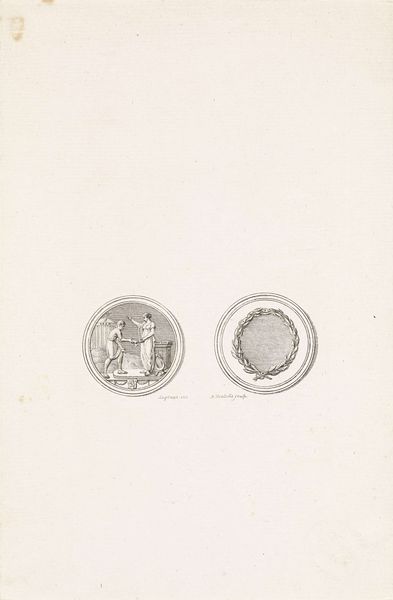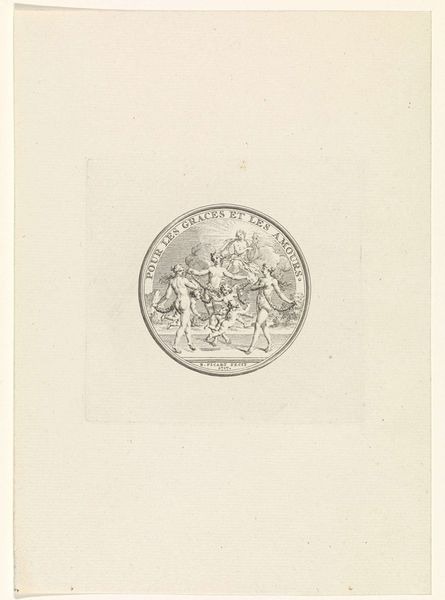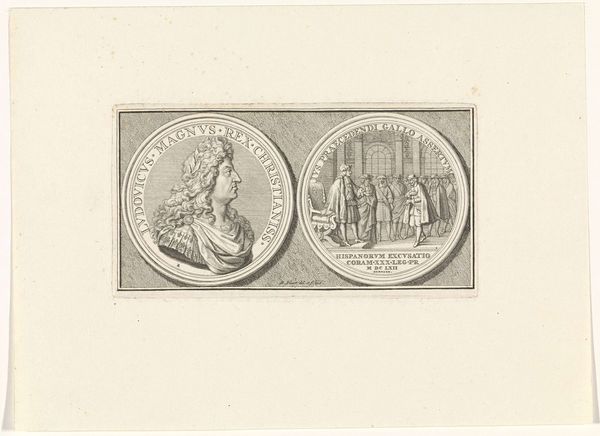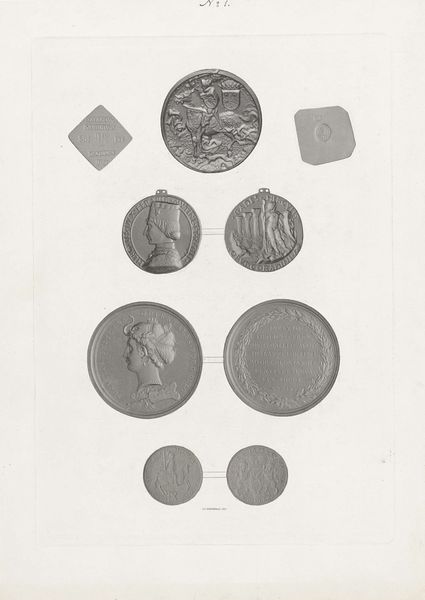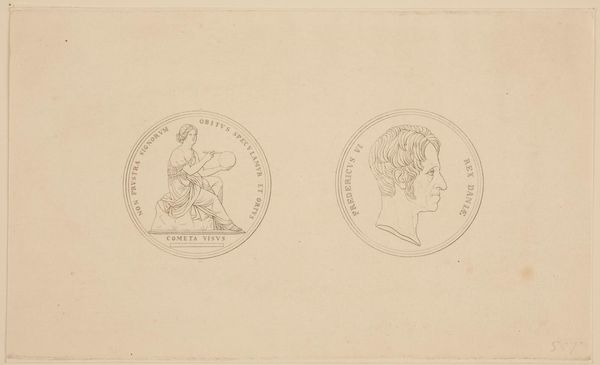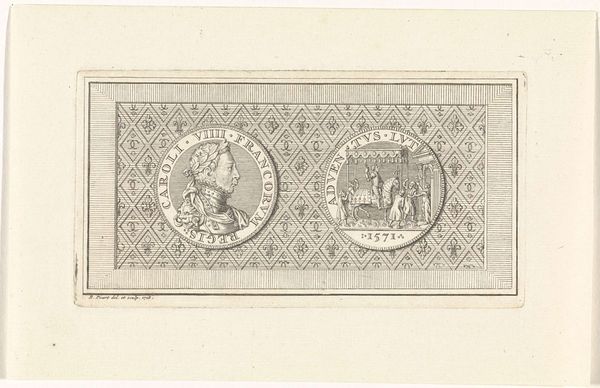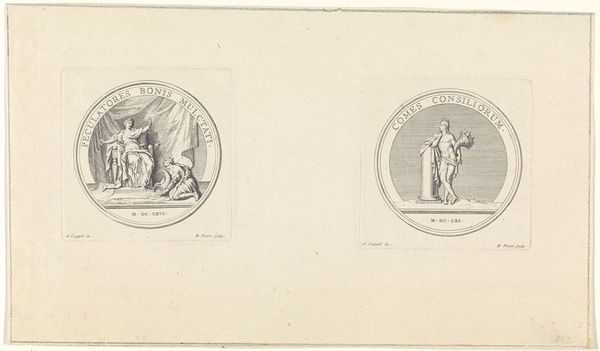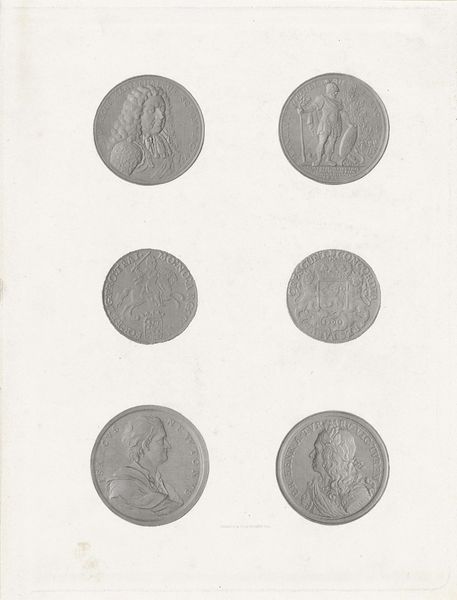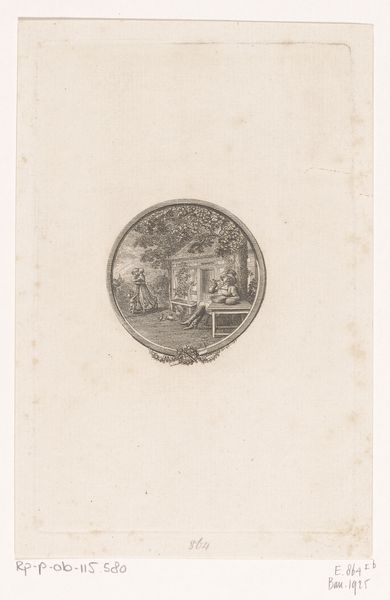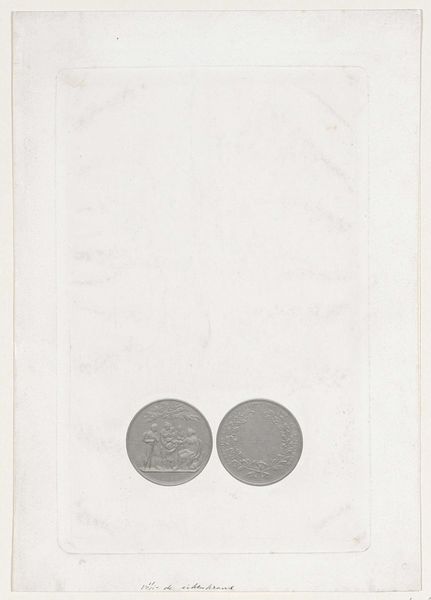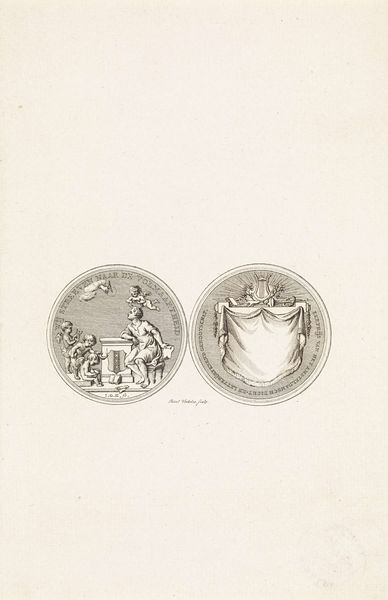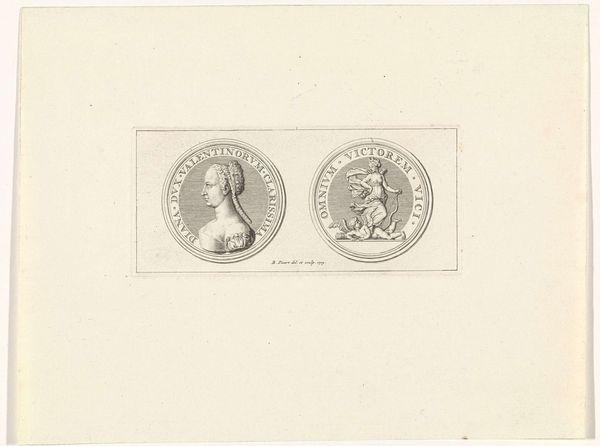
drawing, paper, pencil
#
portrait
#
drawing
#
paper
#
pencil
#
miniature
Dimensions: height 256 mm, width 206 mm
Copyright: Rijks Museum: Open Domain
Curator: I see that you're interested in Carel Adolph Lion Cachet’s “Ontwerpen voor een penning,” a pencil drawing on paper, dating from 1874-1945. What are your first impressions? Editor: Well, it's delicate and the pencilwork gives it a provisional feeling, like a sketch rather than a finished product. What strikes me is the repetitive form. Why present multiple options? Curator: The medium immediately suggests its purpose. This isn’t just art for art’s sake. The choice of pencil and paper points to design, and design indicates function. Think about what a coin represents. It’s currency, power, a tangible representation of the state and its values, reproduced en masse. Editor: So, the process of designing a coin becomes less about individual artistic expression and more about reflecting societal power structures. Does the choice of materials - humble pencil and paper - also downplay the medal's ultimate purpose, which is wealth? Curator: Precisely. This drawing exposes the labor involved in creating these objects of power and value. Each line, each decision made on this paper, feeds into a larger system of production and, ultimately, consumption. Are we meant to question the real worth of the "currency" depicted? Editor: That’s a good question. Seeing the various sketches really puts in perspective all the drafts it takes to create an object that’s designed to look flawless. Curator: This also highlights how seemingly "minor" artistic choices like these often reflect deeply rooted power dynamics and economic considerations, far removed from conventional ideas of artistic freedom. Editor: So much more goes into everyday objects that are often overlooked, it definitely shifts my perspective about how I look at everyday life! Curator: It really opens our eyes to the unseen labor that goes into making and valuing art, and even money.
Comments
No comments
Be the first to comment and join the conversation on the ultimate creative platform.
